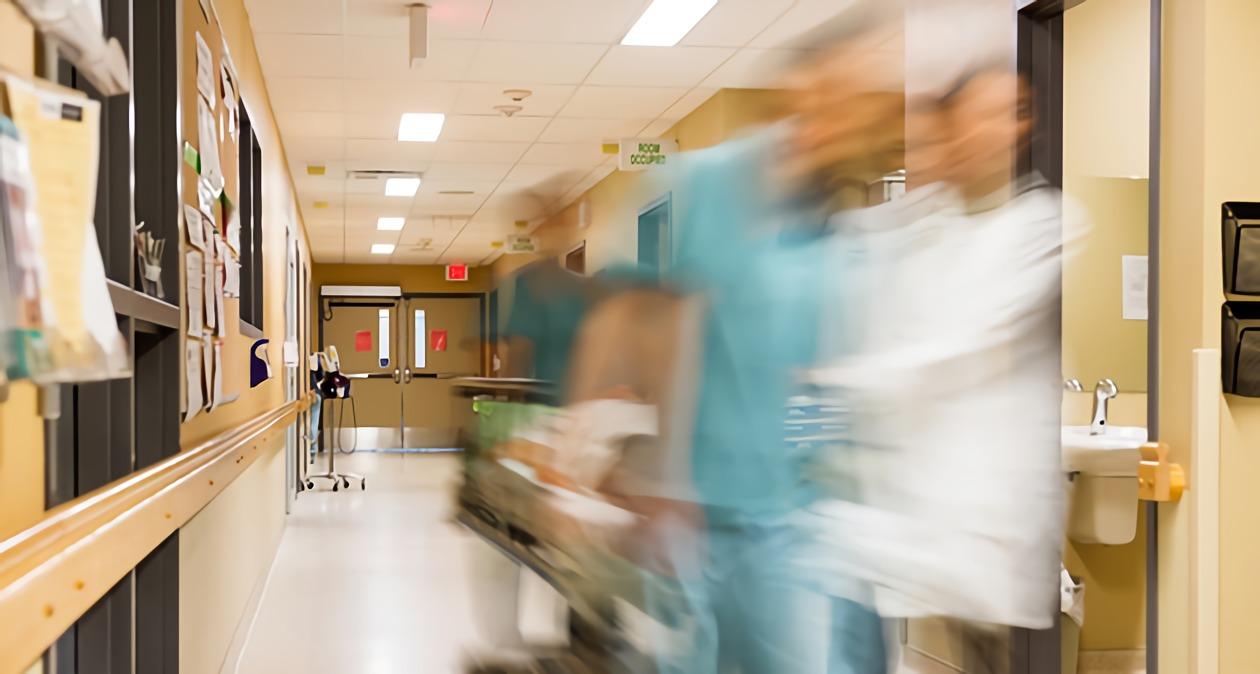
If you are admitted to the hospital to have a surgical procedure, because you were in an accident or have a serious illness, you may wonder any number of things, like how competent the doctor is who will be treating you, whether your nurse will be a good caretaker, or when the facility offers visiting hours for family members. These are, indisputably, reasonable questions to ask when seeking care from a hospital.
Yet, you likely never ask or even think about the hospital’s HVAC/R system and how it could impact your or your loved ones’ health. Is it capable of maintaining proper temperature and humidity throughout the facility? Is it effective in preventing the transmission of airborne infections? These are actually very important questions.
HVAC/R plays an important role in healthcare. Hospitals aren’t the only medical facilities that depend on HVAC/R systems in order to keep the public safe and healthy. Functioning HVAC/R systems are also vital to research laboratories and pharmaceutical manufacturing plants, where rigorous temperature and air quality control is crucial for the development of medical treatments. Technicians with HVACR training are responsible for the maintenance and repair of HVAC/R systems in medical facilities. Below is an overview of some HVAC/R considerations in different medical settings.
HVAC/R Systems in Hospitals
According to a number of experts interviewed by CSE Mag, HVAC systems in hospitals “can literally be a matter of life and death.” The systems must meet particular challenges, comply with a ream of regulatory standards and prevent hospital-acquired infections (HAIs). In addition to complying with regulatory standards applicable to hospitals, HVAC engineers and technicians have to figure out how to design and install HVAC systems with regard to the different areas of the hospital.
Specific challenges for HVAC systems in hospitals arise from the varying needs of different locations within a hospital. The senior vice-president for Global Engineering Solutions, Essi Nafaji, states, “The unique requirement for a hospital design is incorporating all of the different space types into one methodology providing the ventilation, heating, and cooling for all from a few central locations.” Each of the following areas has its own heating, cooling and air quality requirements:
Get Started on the Path to a New Career
Fill out our form to learn how we can help you change your life.
- Office and lobby spaces
- Surgical arenas
- MRI suites
- CT scan rooms
- EEG and other testing areas
- Patient rooms
HVAC/R Systems in Research Facilities
An efficient and reliable HVAC/R system is vital to the functioning of a research facility, particularly those that house animals. Failure of such systems can seriously jeopardize any research project. Long-term studies that are conducted at these facilities require consistent environmental conditions. If the conditions change due to a problem with the HVAC/R or other systems, years of study can be destroyed.
In order to maintain the required environmental consistency and prevent any HVAC/R system failures, the National Institutes of Health (NIH) has established a number of requirements for HVAC/R systems used in research facilities. For example, central HVAC/R systems must feature multiple air-handling units and exhaust fans to provide redundancy and improve reliability. HVAC/R engineers and technicians designing and maintaining these entities have a responsibility to see that the systems perform as needed. Design strategies may include:
- Use of 100 percent outside air
- Managed directional flow to ensure air always flows toward the highest area of containment
- Pressure monitoring
- Audible and visual alarms to alert personnel if a system fails
- Backdraft protection
- Supply and exhaust HEPA filtration using filter housings designed to withstand the pressures associated with the system
HVAC/R Systems in the Pharmaceutical Industry
The Food and Drug Administration (FDA) and International Good Manufacturing Practices (GMP) require all manufacturers of pharmaceuticals to produce their products “in air conditioned and clean space.” This applies to all stages of the process, from research and development to production and packaging. The HVAC/R system must provide protection from airborne contamination from pollutants. Moreover, it needs to exhaust the fumes produced by the manufacturing process. This makes the HVAC systems in this industry “one of the most vital elements in the manufacturing process.”
Especially now that companies have been increasingly developing multi-use manufacturing facilities that create two or more pharmaceutical products simultaneously, preventing cross-contamination in these facilities is paramount. One of the key elements in a multi-use manufacturing facility is its HVAC/R system. An adequately designed HVAC/R system will ensure comfort, hygiene, area segregation and containment, as well as product and personnel safety. Major design requirements considered during the development of a multi-use facility are:
- Area segregation and containment
- Product and personnel safety
- Temperature and humidity
- Area classification and pressurization
- Building automation system and environmental monitoring
- Regulatory requirements as it pertains to HVAC design
Demand for HVAC/R Technicians in Medical Facilities
There is a need for those with HVAC/R training, both engineers and technicians, to install and maintain systems in hospitals and other medically related facilities, as well as in buildings in general. According to the Bureau of Labor Statistics (BLS), job growth in the HVAC/R industry is expected to increase 21 percent by 2022. This is a faster growth rate than for most occupations and means there will be a need for nearly 55,000 more technicians in the next few years.
Moreover, because of the increased sophistication and complexity of HVAC/R systems, employers generally prefer their technicians to have received specialized HVACR training. HVAC technicians in the expanding health sector can look forward to not only excellent employment prospects, but also the prospect of contributing to the progress of modern medicine.
This blog has been labeled as archived as it may no longer contain the most up-to-date data. For a list of all current blog posts, please visit our blog homepage at https://www.rsi.edu/blog/

